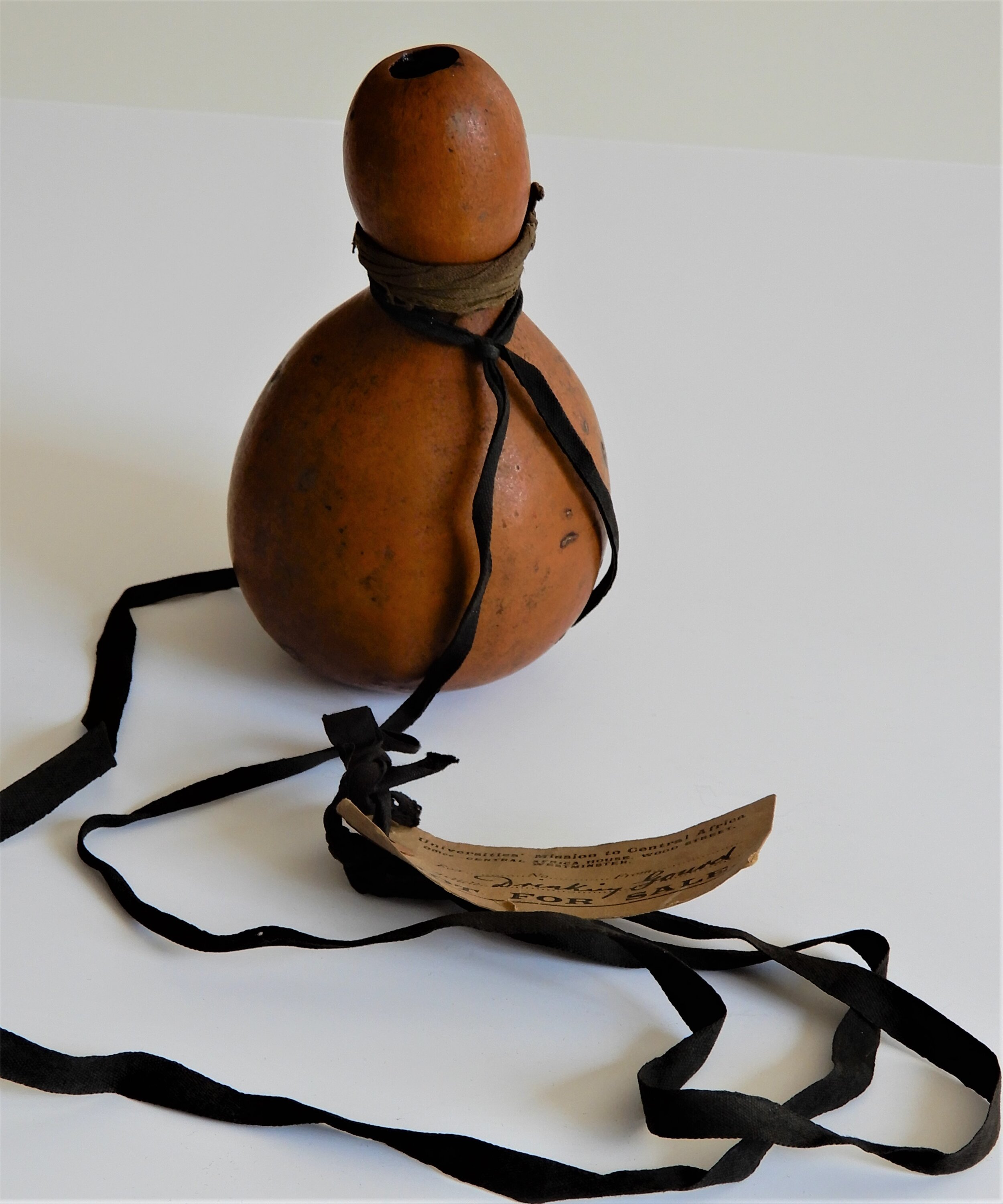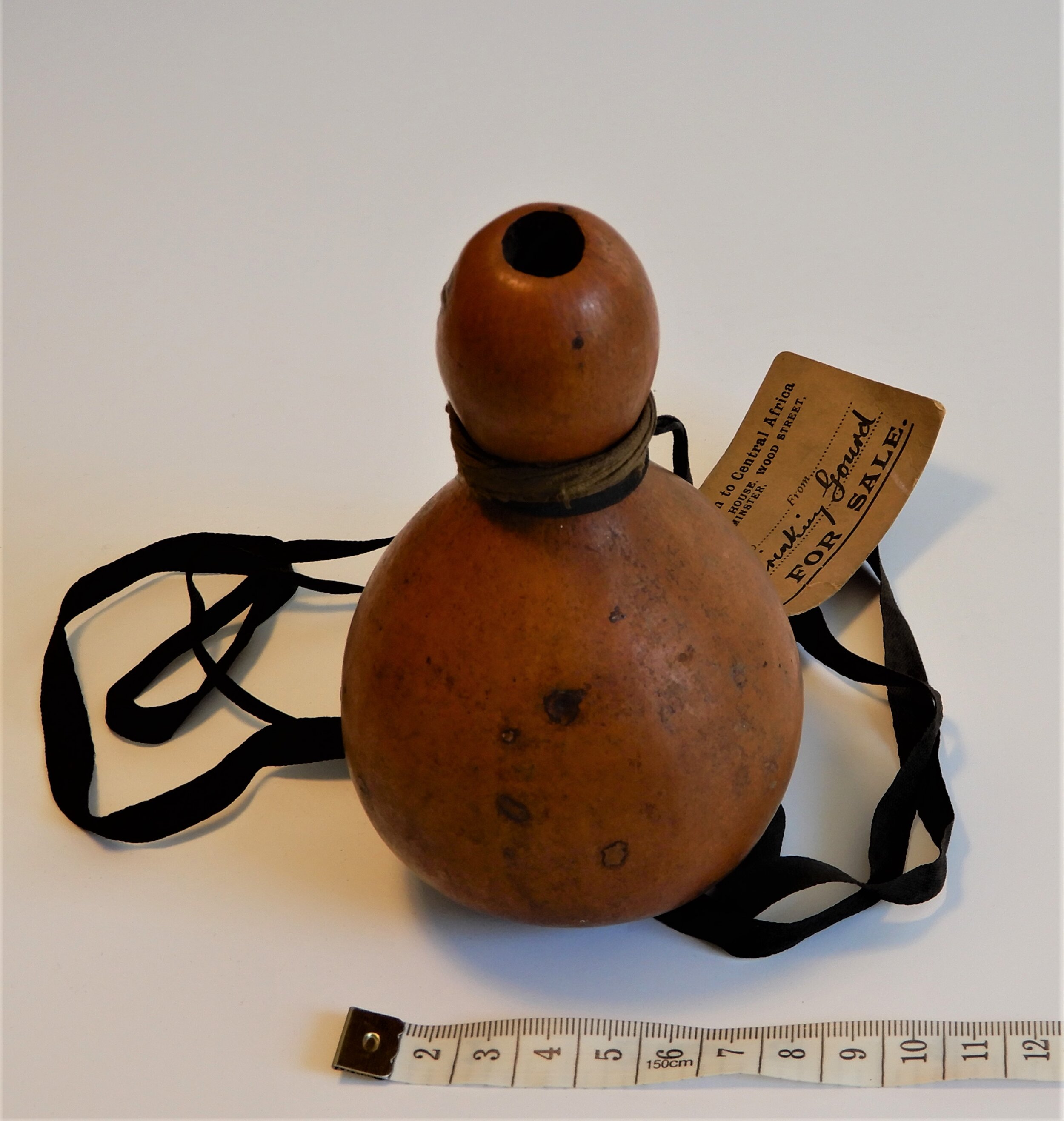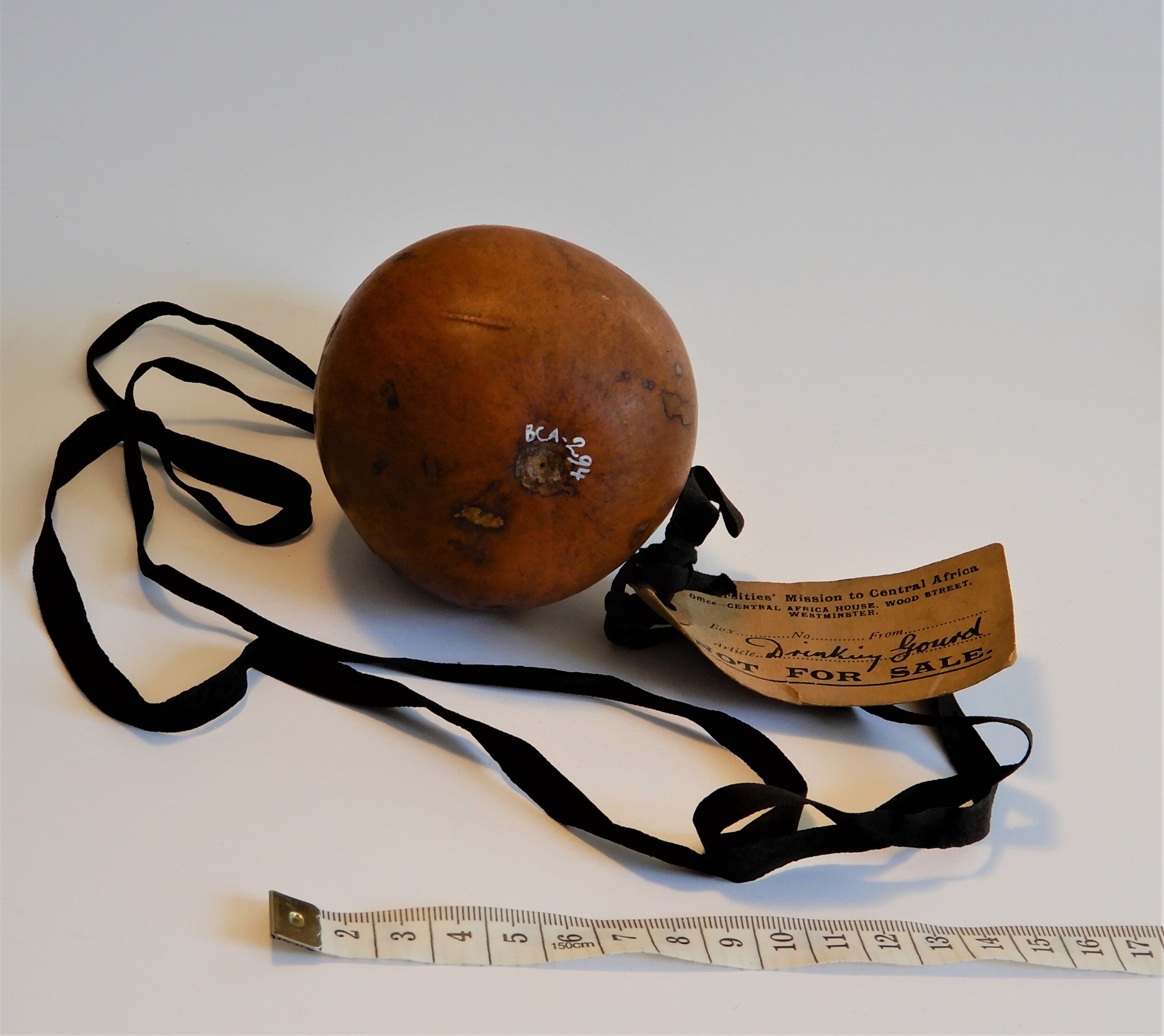Drinking gourd




The label attached to this ‘Drinking Gourd’ gives a clue to its provenance with the Universities’ Mission to Central Africa (UMCA) which was active from 1864 to 1964. As an object, It evidences the UMCA’s early colonial history of the Christian missionary movement and how this enabled the transfer of material objects and people from Africa to the UK.
The UMCA was founded in response to a suggestion by the British physician and missionary David Livingstone (1813-1873) for a society of missions in Africa to train African priests and spread the gospel. It was founded in partnership between members of the Anglican church and the universities of Oxford, Cambridge, Durham and Dublin in Southern Ireland (which was part of the UK from 1801 until 1922). The first missions were established in Nyasaland (later Malawi) and Zanzibar [1].
The UMCA is connected to several objects featured in this project which give insights into the organisation’s complex history which has been contested by post-colonial historians. Some have been critical of the organisation’s core aim which was to form an African Ministry and convert souls to Anglicised forms of Christianity. Michelle Liebst (2014) [2] for example, examines the UMCA’s involvement in the hiring of slaves and efforts made to diminish African material culture and spiritual traditions.
It seems the UMCA played a dual role as historian Jeremy Prestholdt (2008) [3] recognises, that sometimes used and perpetuated slavery but also raised awareness and challenged the practice in East Africa. An example of this comes from a former UMCA missionary named Horace Waller, an anti-slavery activist who was highly critical of Britons who continued to own slaves. He wrote “The truth is this: we don’t eat the slaves, we work the life out of them instead. We are hand in glove with the slave-dealers themselves”.
In 1965, the year after Nyasaland became independent Malawi in 1964, the UMCA merged with the organisation today known as the United Society Partners in the Gospel (USPG) with missions and churches all over the world. We know that at some point in the latter half of the 20th century the UMCA moved from its headquarters at Central Africa House (built 1928) Westminster, London.
In 2012 the building was redeveloped into residential flats. Did some of these objects come from being found during this time or perhaps during an earlier move? Can you help us find out more about these objects? Get in touch contact details.
[1] “A SHORT HISTORY OF THE UNIVERSITIES MISSION TO CENTRAL AFRICA.” Winspear, Canon Frank., The Nyasaland Journal, vol. 9, no. 1, 1956, pp. 11–50.
[2] The African Worker and the Universities’ Mission to Central Africa in Zanzibar, 1864-1900The African Worker and the Universities’ Mission to Central Africa in Zanzibar, 1864-1900, Michelle Liebst, 2014
[3] Jeremy Prestholdt, 2008, Domesticating the World pp: 125, 133
Other resources about the UMCA:
The National Archives has several references to the UMCA, here. The HCA library currently has trial access to the digital primary source collection Tanzania and Malawi in records from colonial missionaries, 1857-1965 from British Online Archives. This gives you access to 54,550 digital pages from the Universities’ Mission to Central Africa (UMCA) archives including correspondence, journals, magazines, books, reports and so on. Accessible here.Do you know anything about this object?
Get in touch using this form.


A drinking gourd from Malwai, brought via the Mission to Central Africa organisation.